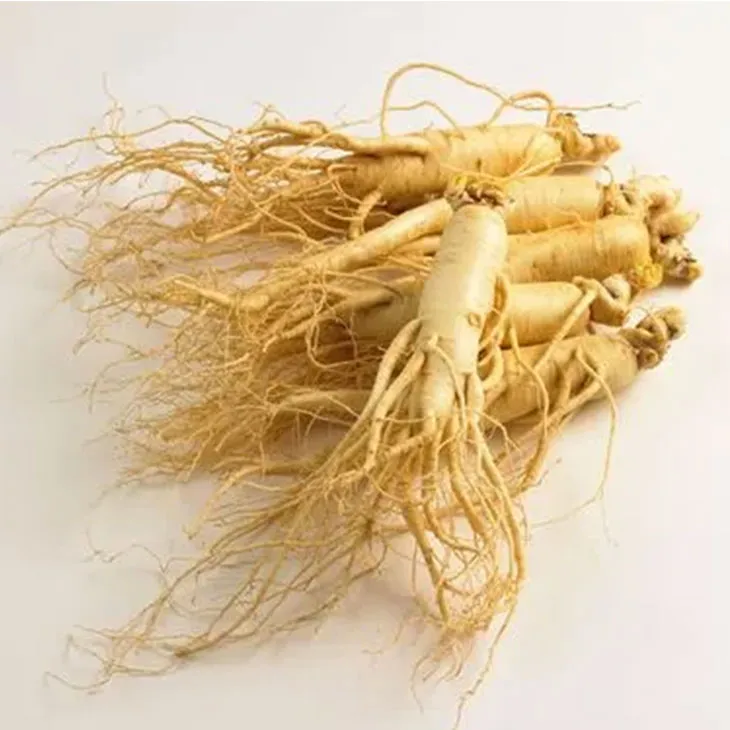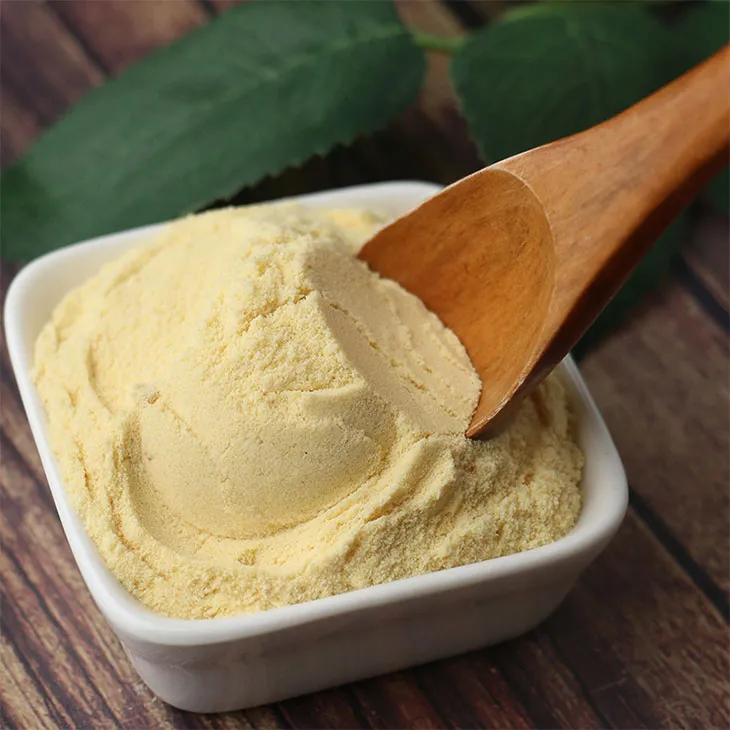- 0086-571-85302990
- sales@greenskybio.com
American Ginseng Root Extract: Nature's Best - Kept Secret.
2024-11-11

1. Introduction to American Ginseng
American ginseng, scientifically known as Panax quinquefolius, is a remarkable plant native to North America. It typically thrives in shady, deciduous forests with rich, well - drained soil. The plant's natural habitat plays a crucial role in determining its unique properties. The cool, moist environment and the specific composition of the soil contribute to the development of its bioactive compounds.

2. Historical Use in Herbal Medicine
Centuries - old Herbal Remedy American Ginseng Root Extract has been used in herbal medicine for centuries. Native American tribes were among the first to discover its medicinal properties. They used it to treat a variety of ailments, from fatigue to digestive problems.
2.1 Regulation of Blood Pressure
One of the long - recognized benefits of American Ginseng Root Extract is its potential to regulate blood pressure. Traditional healers observed that it seemed to have a balancing effect on the body's vital functions. Modern research has begun to explore the mechanisms behind this. It is believed that certain compounds in the extract may interact with the cardiovascular system, helping to dilate blood vessels and reduce stress on the heart.
2.2 Improvement of Digestion
In herbal medicine traditions, American Ginseng Root Extract has also been used to improve digestion. It was thought to stimulate the digestive organs and enhance the body's ability to absorb nutrients. This may be due to its effects on the gut microbiota or its ability to increase the production of digestive enzymes.
2.3 Enhancement of Mental Clarity
Another important aspect of its traditional use is the enhancement of mental clarity. People who consumed American Ginseng Root Extract often reported increased focus and concentration. Some studies suggest that it may affect neurotransmitter levels in the brain, leading to improved cognitive function.

3. Bioactive Components and Their Interaction with the Human Body
Ginsenosides: The Key Compounds The bioactive components in American Ginseng Root Extract are complex, with ginsenosides being the most studied. Ginsenosides are a group of steroid - like compounds that are believed to be responsible for many of the plant's medicinal properties.
3.1 Absorption and Metabolism
When American Ginseng Root Extract is consumed, the ginsenosides are absorbed in the digestive tract. However, their absorption and metabolism are not straightforward processes. The body may convert some ginsenosides into other forms, which may then interact with different cells and tissues. For example, some ginsenosides may be metabolized in the liver and then travel to other parts of the body, where they can exert their effects on the immune system or hormonal regulation.
3.2 Effects on the Immune System
Research has shown that American ginseng root extract can modulate the immune system. The ginsenosides may enhance the activity of immune cells such as macrophages and lymphocytes. This can help the body to better defend against infections and diseases. Additionally, it may also regulate the immune response, preventing over - activation which can lead to autoimmune disorders.
3.3 Impact on Hormonal Balance
There is evidence that American ginseng root extract can influence hormonal balance. It may affect the production and secretion of hormones such as cortisol, which is involved in the body's stress response. By regulating cortisol levels, it can help the body to better cope with stress and maintain overall physiological balance.

4. Sustainable Harvesting and Cultivation
Preserving a Precious Resource As the demand for American ginseng root extract grows, sustainable harvesting and cultivation become increasingly important. American ginseng is a slow - growing plant, and over - harvesting can lead to its depletion in the wild.
4.1 Harvesting Regulations
Many regions have established strict harvesting regulations. For example, in some areas, only a certain amount of American ginseng can be harvested per year, and the harvesting season is limited. Harvesters are also required to follow proper techniques to ensure that the plants can regenerate. This includes leaving a portion of the root intact when harvesting and not damaging the surrounding plants.
4.2 Cultivation Practices
Cultivation as an Alternative Cultivation of American ginseng has emerged as an important alternative to wild harvesting. Cultivators need to replicate the plant's natural habitat as closely as possible. This involves providing the right amount of shade, moisture, and soil conditions. Organic cultivation methods are also preferred to avoid the use of harmful pesticides and fertilizers.
4.3 Conservation Efforts
There are various conservation efforts in place to protect American ginseng. These include habitat restoration projects, where degraded forest areas are restored to provide suitable habitats for the plant. Additionally, educational programs are being carried out to raise awareness about the importance of American ginseng conservation among the public and harvesters alike.

5. Conclusion
American ginseng root extract is truly a nature's best - kept secret. Its long history of use in herbal medicine, combined with the growing scientific understanding of its bioactive components, makes it a valuable natural resource. However, to ensure its availability for future generations, sustainable harvesting and cultivation practices must be continued and improved. With further research, American ginseng root extract may hold even more potential for the treatment and prevention of various health conditions.
FAQ:
What is the natural habitat of American ginseng?
American ginseng (Panax quinquefolius) is native to eastern North America. It typically grows in deciduous forests with rich, well - drained soil and a certain amount of shade. These forests provide the necessary cool and moist environment for the plant to thrive.
How does American ginseng root extract regulate blood pressure?
The exact mechanism is still being studied. However, it is believed that certain bioactive components in the extract may interact with the cardiovascular system. Some components might affect the blood vessels, either by relaxing them or influencing the balance of substances involved in blood pressure regulation, such as hormones and neurotransmitters.
What are the main bioactive components in American ginseng root extract?
Ginsenosides are among the main bioactive components. These are a group of steroid - like compounds that are thought to be responsible for many of the health - promoting effects of American ginseng. Other components may include polysaccharides and flavonoids, which also contribute to its overall pharmacological properties.
How can American ginseng be sustainably harvested?
Sustainable harvesting of American ginseng involves following strict regulations. This may include only harvesting mature plants, leaving a certain number of plants to ensure reproduction, and harvesting at the appropriate time of year. Additionally, cultivation efforts can help reduce the pressure on wild populations. Cultivation should be done in an environmentally friendly way, mimicking the plant's natural habitat as closely as possible.
How does American ginseng root extract improve digestion?
It may work by influencing the function of the digestive system. Some studies suggest that it can stimulate the secretion of digestive enzymes, which helps break down food more efficiently. It may also have a regulatory effect on the gut microbiota, promoting a healthy balance of bacteria in the intestines.
Related literature
- American Ginseng: Botany, Ethnobotany, and Pharmacology"
- "The Bioactive Compounds and Health Benefits of American Ginseng Root Extract"
- "Sustainable Cultivation and Harvesting of American Ginseng: A Review"
- ▶ Hesperidin
- ▶ Citrus Bioflavonoids
- ▶ Plant Extract
- ▶ lycopene
- ▶ Diosmin
- ▶ Grape seed extract
- ▶ Sea buckthorn Juice Powder
- ▶ Fruit Juice Powder
- ▶ Hops Extract
- ▶ Artichoke Extract
- ▶ Mushroom extract
- ▶ Astaxanthin
- ▶ Green Tea Extract
- ▶ Curcumin
- ▶ Horse Chestnut Extract
- ▶ Other Product
- ▶ Boswellia Serrata Extract
- ▶ Resveratrol
- ▶ Marigold Extract
- ▶ Grape Leaf Extract
- ▶ New Product
- ▶ Aminolevulinic acid
- ▶ Cranberry Extract
- ▶ Red Yeast Rice
- ▶ Red Wine Extract
-
Uridine-5'-monophosphate Disodium salt
2024-11-11
-
Black Rice Extract
2024-11-11
-
Passionflower Extract
2024-11-11
-
Citrus bioflavonoids
2024-11-11
-
Stevia Extract
2024-11-11
-
Nutmeg Extract
2024-11-11
-
Nettle leaf extract
2024-11-11
-
Rosemary extract
2024-11-11
-
Yellow Pine Extract
2024-11-11
-
Lotus leaf extract
2024-11-11





















